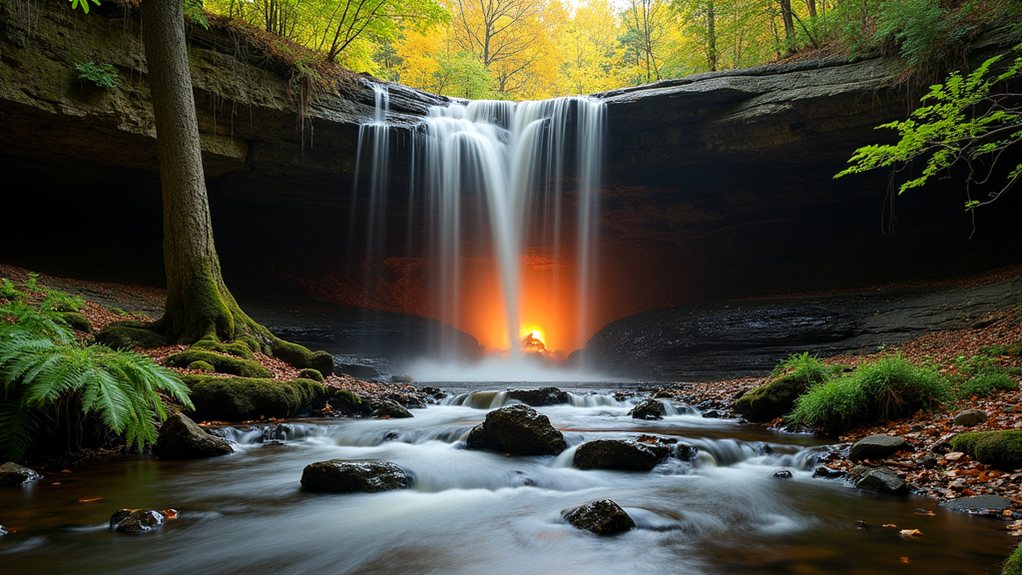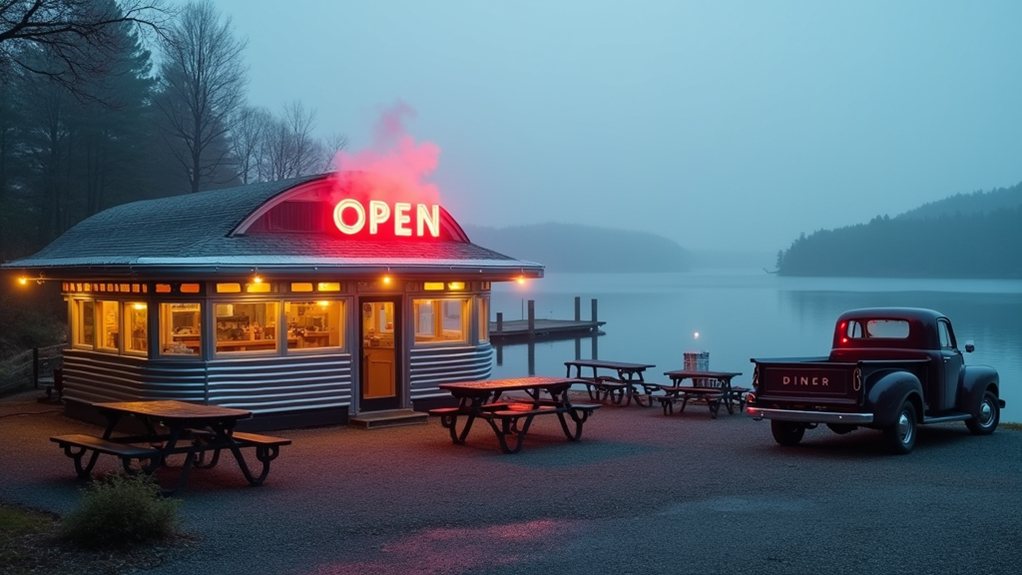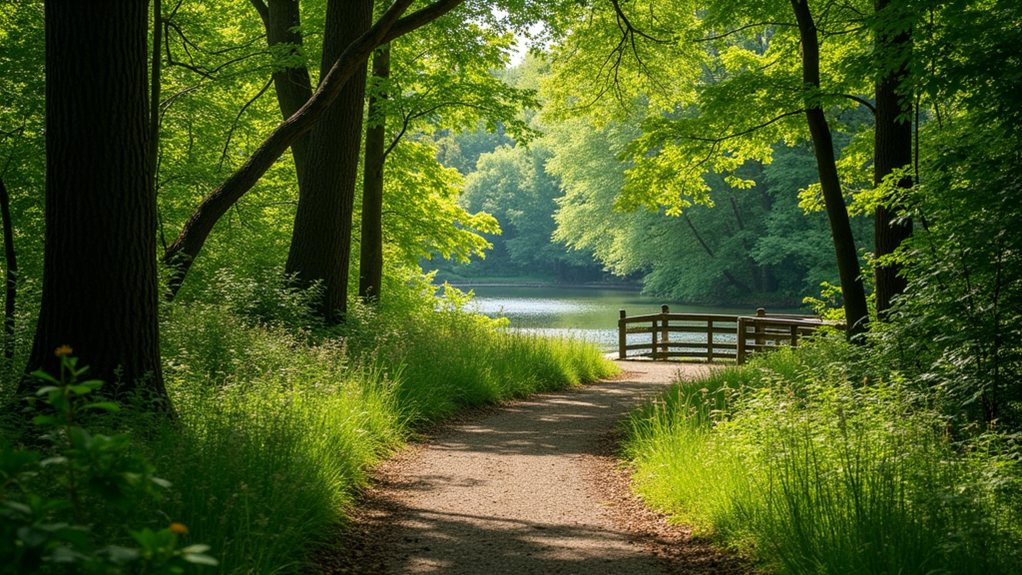Tucked away in the lush forests of Western New York, the Eternal Flame Falls presents a head-scratching natural oddity that’s baffled scientists for years. A small waterfall, pleasant enough on its own, harbors an unexpected surprise—a dancing flame, 3 to 9 inches tall, that refuses to extinguish despite the cascading water around it. What’s keeping this natural gas flame lit, contrary to all logical expectations? The answer, it seems, isn’t as straightforward as anyone thought.
Nature’s Paradox: Fire Meets Water in Western New York

Hidden within the peaceful Shale Creek Preserve of Western New York, a mystifying natural wonder summons curious adventurers and scientists alike. The Eternal Flame Falls, a 35-foot cascade with a persistent flame burning behind its waters, stands as one of Earth’s most peculiar geological phenomena, drawing tens of thousands of visitors annually to witness its improbable dance of fire and water.
First documented by pioneers in the mid-1600s, this extraordinary site may have been lit by Native Americans thousands of years earlier. The flame, typically ranging from 3 to 9 inches in height, is fueled by natural gas seeping from the Rhinestreet Shale formation approximately 400 meters below ground.
Ancient origins, modern mystery—a timeless flame fueled by Earth’s depths, beckoning through centuries of human wonder.
What puzzles researchers, however, isn’t just the flame’s existence but its unusual chemical composition, containing higher percentages of ethane and propane than typical methane-rich seeps. The scientific mystery deepens when considering the temperature of the surrounding shale, which is cooler than would normally support gas generation. Professor Arndt Schimmelmann hypothesizes there is continuous gas generation at depth through an unknown mechanism.
This suggests previously uncharacterized processes for natural gas formation in cooler conditions, challenging conventional geological understanding and leaving researchers scratching their heads. A 2013 study published in Marine and Petroleum Geology offered groundbreaking insights into the flame’s surprising longevity despite its continuous burning.
Reaching this natural oddity requires a half-mile trek along a well-marked trail that, while improved with additional steps and railings, can prove challenging during inclement weather. Located in Chestnut Ridge Park just south of Buffalo, the trail offers hikers a moderately challenging but rewarding journey through scenic woodland terrain. Unlike Hawaii’s lush hiking trails with tropical surroundings, this northeastern path presents a distinctly different ecological experience. Photographers seeking the perfect shot would do well to arrive about an hour before sunset, when light conditions transform the dual-segmented waterfall into a truly magical spectacle.
The site’s growing popularity comes with environmental concerns, as increased foot traffic threatens the delicate ecosystem of pine and hemlock forests surrounding the falls. The waterfall itself experiences seasonal variability, often running dry during warmer months while creating slippery conditions in winter.
Should visitors find the flame extinguished by water or wind, many take it upon themselves to relight this natural guiding light, continuing a tradition that spans centuries and embodying the human fascination with unexplained natural phenomena that defy our understanding of how the world works.







